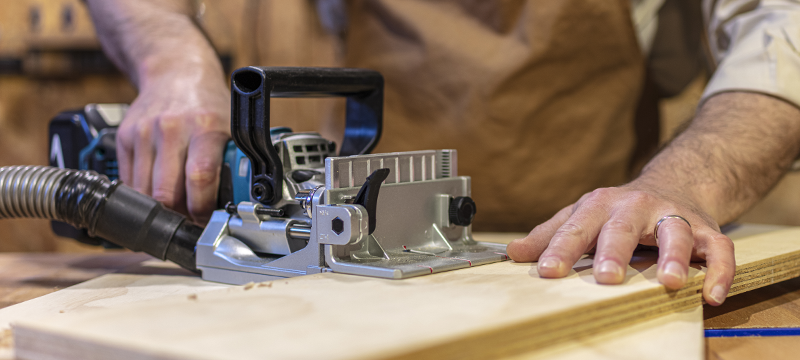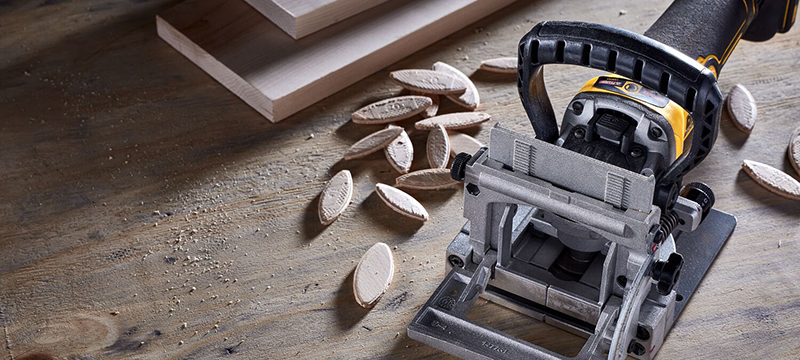Biscuit Joiner
A biscuit joiner, sometimes called a plate joiner, is a tool to join two pieces of wood to create a biscuit joint. A biscuit joint involves inserting a compressed wood chip, the biscuit, in slots cut in the corresponding piece of wood.
How it works
A biscuit joiner uses a tiny circular blade to cut a football-shaped hole in the opposite edge of two pieces of wood. The highly-dried biscuit is then covered with glue or applied in the slot. The biscuit is immediately placed in the slot, the boards are clamped together, and the wet glue expands the biscuit and strengthens the bond.
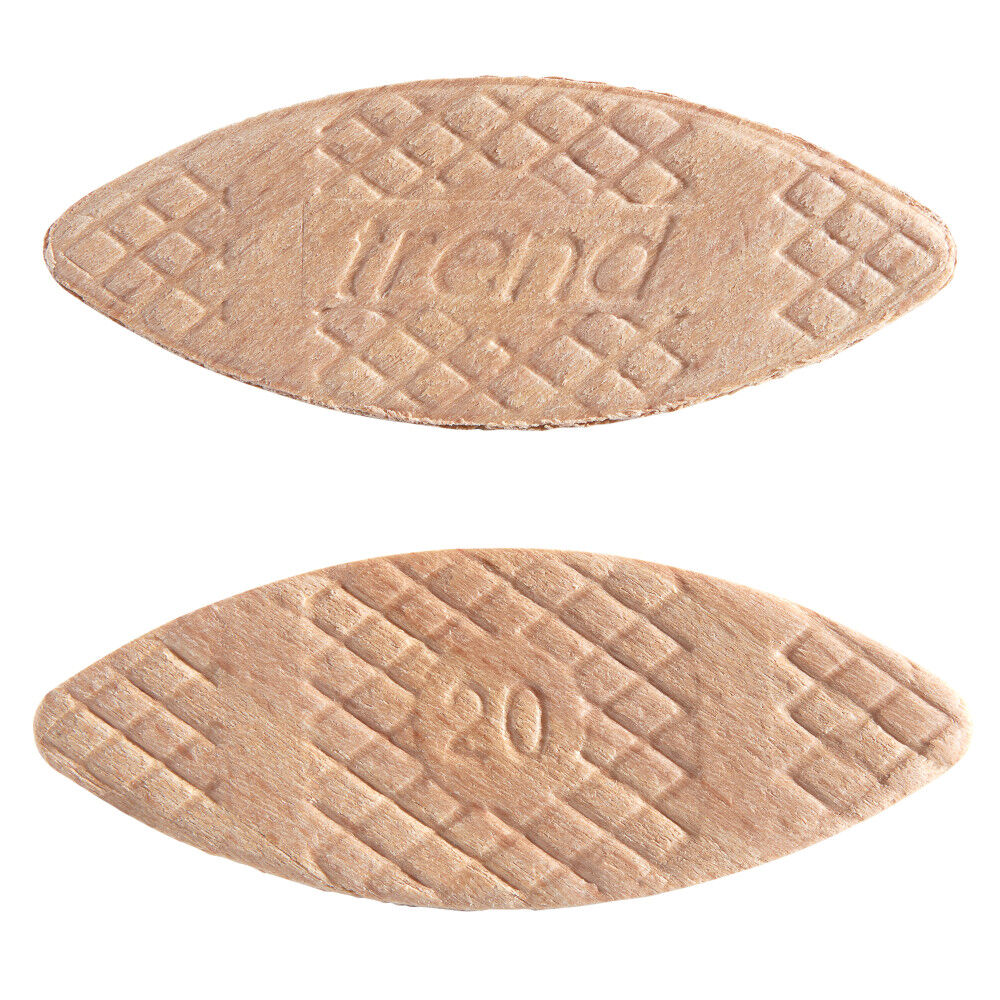
How to use
After marking the wood where the biscuits are placed, it’s time to put your biscuit joiner to work. Next, set the tool firmly on the pencil markings. Then, turn it on and push the power tool forward to create the crescent-shaped cut in the wood. It’s essential to apply pressure to release the blade and allow it to cut the wood. Typically, the joiner’s cutting blade will retract when it’s idle. Clean your joiner according to the user manual before storing it to increase the lifespan of your tool.
Why a biscuit joint?
Biscuit joints are a quick and easy way to align glued parts. They also add pull-apart strength to joints that couldn’t stand on their own. The type of joint you will need is primarily based on your project. Biscuits are inexpensive and pre-made, making them easier to work with and increase your project’s turnover time. Due to how the joint is created, they make flawless seams ideal for joining two pieces of wood.
Domino Joiner
A Domino joiner is a biscuit joiner with a few key differences. The Domino version works similarly; it cuts slots in two pieces of wood and uses a piece to connect them. The first key difference is that the domino biscuit is rectangular-shaped, unlike the traditional biscuit, which is oval-shaped. Another significant difference is the biscuit material. Domino biscuits are typically made from beech or mahogany, while traditional biscuits are made from composite wood.
How it works
It works like a biscuit joiner, except the domino joiner uses a sharp router bit that sweeps from side to side to create a square-shaped cut, and the operator controls the depth of the cut. You also use a domino joiner, the same as a biscuit joiner; Mark the wood, place the joiner on the marks, and apply pressure to create the cut. Remember, one of the differences between these machines is that the user controls the depth of the cut with a domino joiner, so be mindful of that when applying pressure to your equipment.
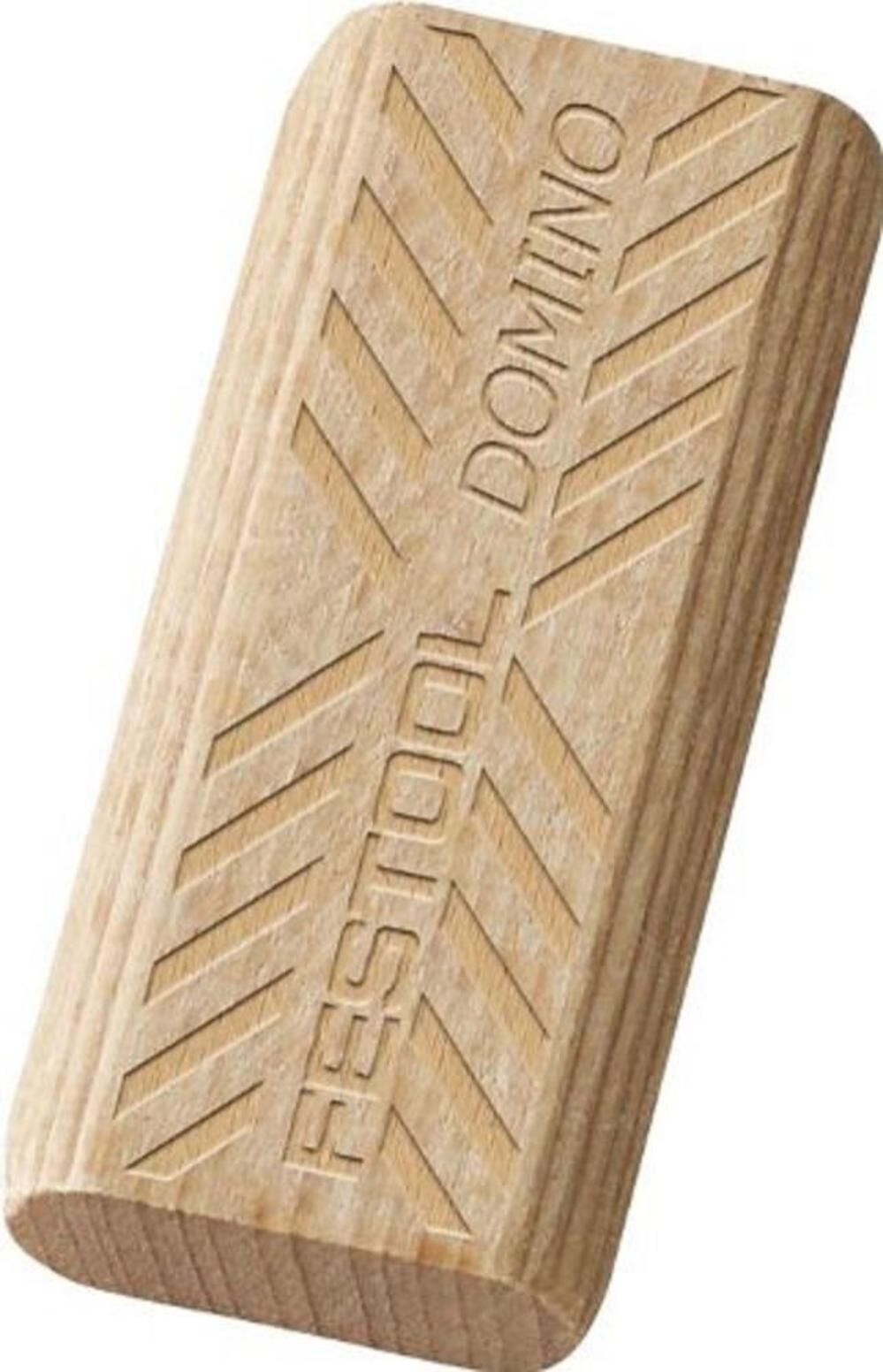
Why a Domino joiner?
You can use a domino joiner for any project where you generally use a biscuit joiner. However, domino joiners are ideal for making furniture like tables, chairs, doors, and cabinets as they create a more solid joint. Domino joiners also allow for wood joints in round or curved material, such as handrails, which is impossible with the biscuit joiner.
Recommendations
After reading this, if you’ve decided you want to pick up a biscuit joiner for your woodworking needs, below are some suggestions:
Cordless
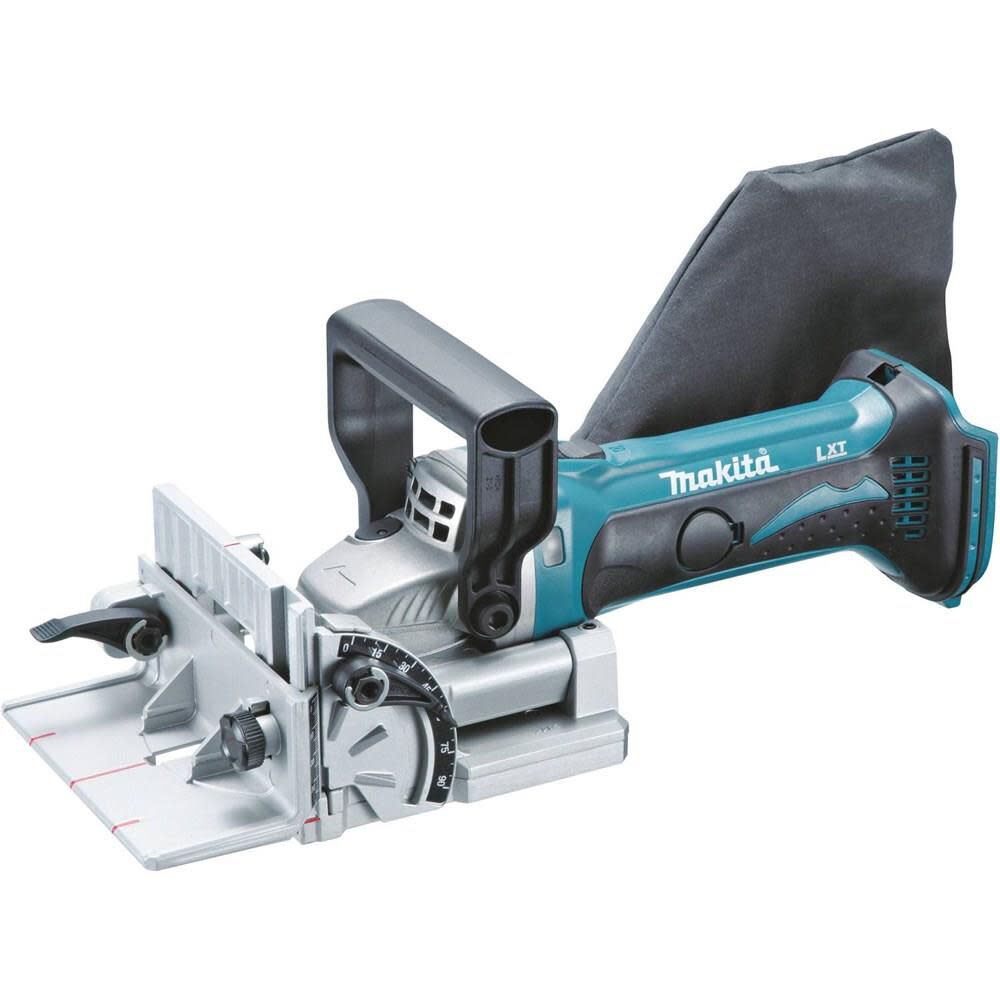
Cordless biscuit joiners are ideal for projects that require you to be outside the shop. One example is kitchen remodels, where you must join two countertop sections without finding an extension cord. If you’re looking for a cordless biscuit joiner, the 18V Cordless Plate Joiner from Makita is an excellent option. The lightweight joiner is designed for portability, so you can easily take it anywhere. The tool has six depth settings with stops for the most common biscuit sizes. Makita ensures quick and easy blade changes with their tool-less blade cover and shaft lock.
Corded

Most biscuit joiners are corded since most woodworking projects are in the workshop and typically have readily available power. The DEWALT Biscuit Joiner Heavy Duty Kit is an excellent choice if you’re looking for a corded joiner. The kit has everything you’ll need to start your woodworking journey, including the joiner, carbide blade, dust bag, vacuum adapter, Torx key, wrench, and kit box.
Domino Joiner
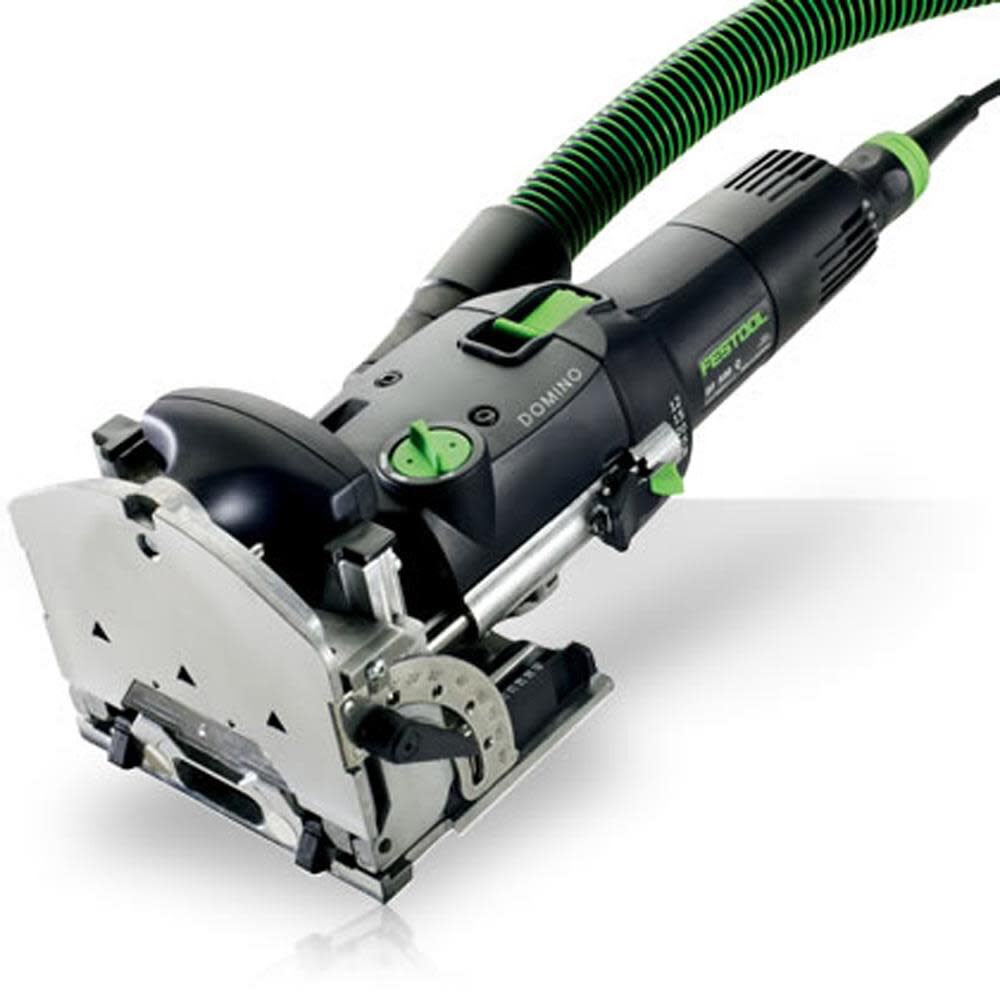
There is only one Domino joiner: The Festool Domino Joiner. The domino joiner can create mortises 4-10mm wide and 50mm deep. It also boasts easy and quick stops that increase accuracy and allow fast adjustments. Change between tenons and cutters in seconds for quicker joining and increased productivity.
Final Thoughts
While the Festool Domino Joiner comes with a hefty price tag, it’s worth the cost if you’re doing or planning on doing a lot of woodworking projects. However, if you intend to use it less or are still deciding whether to commit to the cost of the joiner, biscuit joiners are a great alternative. Explore our expansive selection of joiners and other power tools at Acme Tools.

